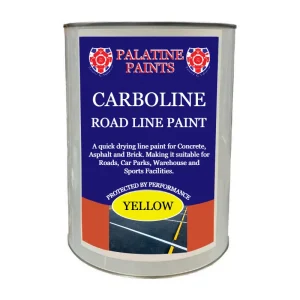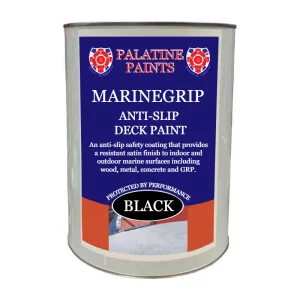Priming and Protecting, Varnish and Wood Oils
Why Use Oil-Based Primer and Its Benefits
Painting projects require the right type of primer, and one popular option is oil-based primer. This article will explore why you should use oil-based primer and the benefits it offers.
To provide a comprehensive understanding, we have thoroughly researched various sources and compiled the most pertinent facts and details.
1. Introduction to Oil-Based Primers
A. What is Oil-Based Primer?
Oil-based primer is a type of primer that uses oil as its main ingredient, providing a durable and strong bond to various surfaces. It has been widely used in the painting industry for many years, offering unique benefits that make it stand out from other primers.
B. Primer Types
There are several types of primers available in the market, including oil-based, water-based, and shellac-based primers. Each type has its own unique features and applications, which we will explore in this article, focusing on the benefits of oil-based primer.
2. When to Use Oil-Based Primer
A. Painting Interior and Exterior Wood
Oil-based primer is an excellent choice when painting interior and exterior unfinished or bare wood surfaces. It seals the wood’s porous surface effectively, preventing tannins from bleeding through the paint and ensuring proper adhesion.
B. Stain Blocking
Oil-based primers are highly effective at blocking stains, including water, nicotine, and ink stains. This makes them an ideal choice when working on surfaces with existing stains or when covering up old paint jobs.
C. Applying to Different Surfaces
Oil-based primers can be used on a variety of surfaces, including galvanized metals, wood, and previously painted surfaces. They provide excellent adhesion and long-lasting durability, making them a versatile option for various types of projects.
3. Benefits of Using Oil-Based Primer
A. Stain Coverage
As mentioned earlier, oil-based primers excel at covering stains. They ensure that the stains do not show through the paint, providing a clean, uniform finish.
B. Compatibility with Oil and Latex Paints
Oil-based primers work well with both oil and latex paints, making them suitable for use on different surfaces and with various paint types.
C. Sealing Porous Surfaces
One of the main advantages of oil-based primers is their ability to seal porous surfaces effectively. They act as sealants for the wood’s porous surface, ensuring that the paint adheres well and lasts longer.
D. Preventing Tannin Bleed
Oil-based primers can effectively prevent tannin bleed, which occurs when the tannins in wood bleed through the paint and ruin its appearance. Their sealing properties help keep tannins in check, ensuring a flawless finish.
4. Oil-Based Primers vs. Water-Based Primers
A. Differences in Application
Water-based primers are best suited for latex, acrylic, and oil-based paints when applying enamel paints. In contrast, oil-based primers work better on surfaces like windows, doors, wood, and metal.
B. Suitability for Different Surfaces
Water-based primers work well on ceilings, interior walls, and exterior surfaces for new projects. On the other hand, oil-based primers offer better performance on surfaces that require more durability and stain-blocking capabilities.
5. Proper Application of Oil-Based Primer
A. Covering Old Stains
When dealing with old stains or unpleasant odors, oil-based primers are the right choice. They effectively block stains and odors, ensuring a clean and fresh finish.
B. Painting Wood or Metal
Oil-based primers are ideal for painting wood and metal surfaces, as they seal porous surfaces and provide excellent adhesion.
C. Using Enamel Paint
When using oil-based paint, such as enamel, oil-based primer is the best choice. It is not recommended to use oil-based primer with water-based paint.
D. Drying Time Considerations
Oil-based primers take longer to dry than water-based primers, so it’s essential to plan your project accordingly and allow sufficient drying time before applying the paint.
6. Drawbacks of Using Oil-Based Primers
A. Volatile Organic Compounds (VOCs)
Oil-based primers release VOCs, which can be harmful in high concentrations or with prolonged exposure. It’s essential to ensure proper ventilation when working with oil-based primers to minimize the risk.
7. How to Apply Oil-Based Primer
A. Stirring the Primer
Before application, it’s crucial to stir the primer thoroughly to ensure proper mixing of the oil and pigment.
B. Using a New Container
Pour a small amount of primer into a new container to prevent dried primer blobs from contaminating the mixture.
C. Thinning with Mineral Spirits
If the primer becomes too thick, use mineral spirits to thin it out for smooth application.
D. Choosing a High-Quality Brush
Invest in a high-quality bristle brush for the best results when applying oil-based primer.
E. Sanding After Drying
Once the primer has dried, sand any imperfections gently for a smooth finish.
9. Painting with Oil-Based Primer
A. Latex Primer vs. Oil-Based Primer
Latex primer does not seal wood effectively, leading to discoloration and tannin bleed. Oil-based primer, on the other hand, works better for priming unpainted wood and covering stains.
B. Enhancing Old Paint Gloss
Oil-based primer can help enhance the gloss of old paint, providing a fresh look to your surfaces.
10. FAQs
A. Can you paint over oil-based primer?
Yes, you can paint over oil-based primer, but you must allow it to dry completely before applying the paint.
B. Can you use latex paint over an oil-based primer?
Yes, you can use latex paint over an oil-based primer. However, ensure the primer is fully dry before applying the paint.
C. How to remove paint primer from skin?
To remove paint primer from your skin, use a mixture of soap and warm water, rubbing alcohol, vinegar, or a commercial paint remover.
In conclusion, oil-based primer offers numerous benefits for painting projects, including excellent stain coverage, compatibility with various paint types, and effective sealing of porous surfaces.
Understanding when and how to use oil-based primer will help you achieve professional results in your painting projects. Make sure to read product labels and choose the best primers and paints for your specific needs.
Contacting us is easy!
Email: [email protected]
Call Us: 01942 884 122
Contact form: https://www.palatinepaints.co.uk/contact-us
Live Chat Service: Press the small blue icon at the bottom left of your screen.

